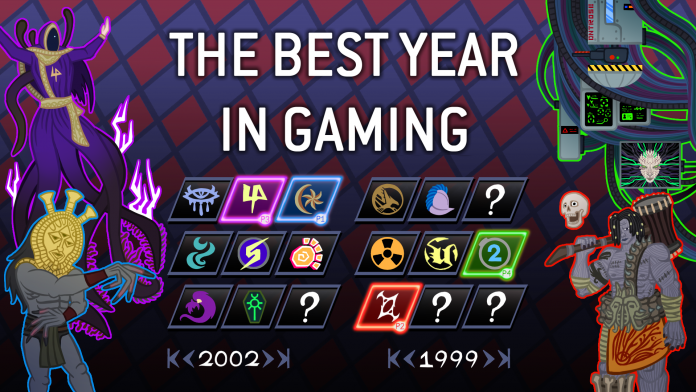Last year’s stacked lineup of games for the Game Awards had us thinking: What was the best year in gaming? As part of our series on determining gaming’s best year, we’re putting together an article on each year, charting the major releases and developments of the year, and talking about both their impact and what made them great.

The Year: 1980
Between 1979 and 1980, arcade revenue in the United States tripled to $2.8 billion and more than 85% of the American population between the ages of 13 and 20 played video games. Continuing the trend of bangers and classics shipped to arcades nationwide, 1980 saw the release of three all-time arcade classics: Pac-Man, Defender, and Missile Command, while Space Invaders II was a solid update of the classic from three years prior.
Sonly launched its first Walkman portable cassette player in the US and UK in 1980. Capable of playing cassettes with high-quality sound playback on the move, the device was an instant sensation and would go on to define the 1980s. The Walkman also played a massive role in establishing the Japanese as technology innovators in the west, something which would continue in the decades to follow, particularly in gaming.
On the computing front, IBM released its 801 system, the first system built using RISC architecture. RISC, or Reduced Instruction Set Computer architecture is designed around simplifying the instructions given to the processor. The tradeoff is that while you have to issue more instructions to accomplish a given task (and write more code), the processing time of each instruction speeds way up, allowing the CPU to massively increase the number of instructions per second it can accomplish. Later on this would be combined with pipe-lining, or breaking down instructions into smaller stages to execute multiple instructions simultaneously. In the early 1980s different programs would develop different RISC processors, leading to the ARM, MIPS, and Power PC architectures, each commonly used in different devices. Apple would go on to invest heavily in RISC architecture through Power PC, while IBM’s x86 CPUs would continue to make use of Complex Instruction Set Computer (CISC) architecture. If you’ve ever wondered why Apple computers were good at video processing, or why porting games to iOS was rare, this difference in architecture is the reason.
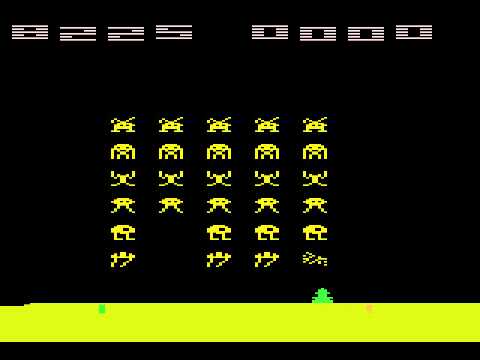
Space Invaders Comes Home
Despite being the most popular home console on the market, Atari’s VCS (known today as the 2600) was struggling. The console had a lineup of about 20 games, but still lacked the kind of killer app it needed to really sell the console as a “must-buy.” In 1979 after the massive success of Space Invaders at arcades, Atari approached developer Taito to acquire the rights to the game for release on its VCS console. After several months of development working to fit the game onto a 4kb cartridge, Atari released its home version of Space Invaders in March, 1980. The game would feature fewer enemies and one fewer bunker, but had unique, full-color graphics, multiple game modes, and a co-op two-player mode where players can share control. The game was a massive hit for Atari and immediately elevated the console. Combined with the success of its arcade releases, Atari would skyrocket to new heights in 1980 and shift the company’s focus to releasing home ports of its arcade games. Atari’s Space Invaders isn’t the best version of the game graphically but it’s still a fun time and one of the best games you can play on the Atari 2600.
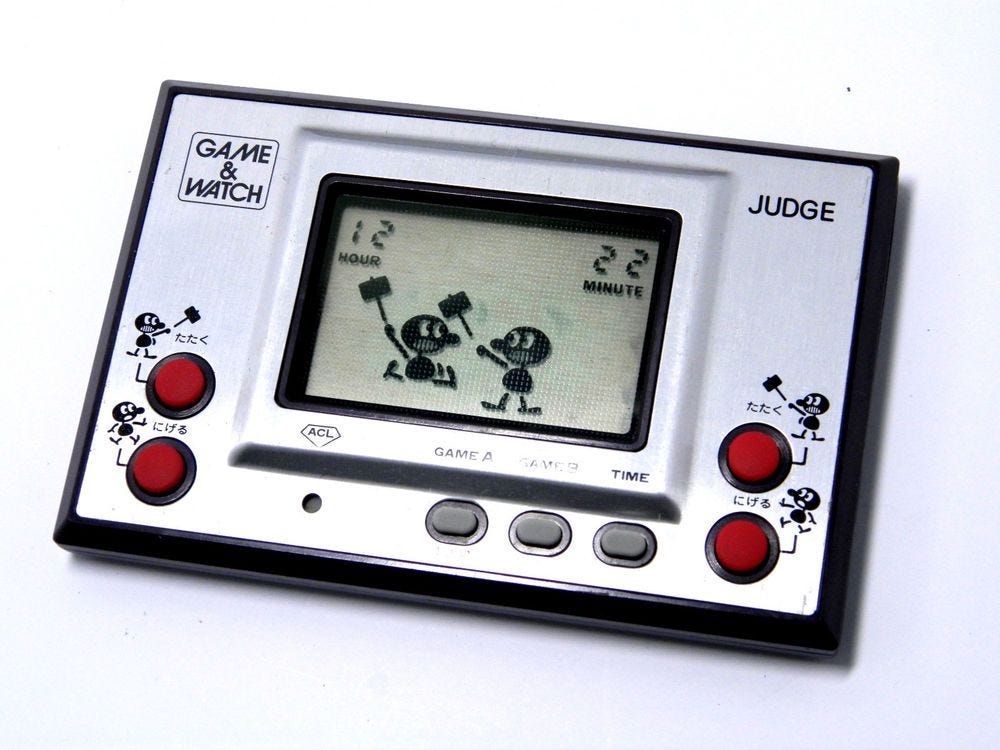
Nintendo Releases the Game & Watch
Nintendo kicked off its long history of handheld gaming with the release of its first Game & Watch devices in 1980. There were five in the first run, and each device was a standalone game featuring an LCD screen and series of buttons. The games are relatively simple – Fireman for example has players bouncing falling fire rescue victims across a street to an ambulance – but they were fun you could have on the go and would inspire a host of imitators in the years that followed.
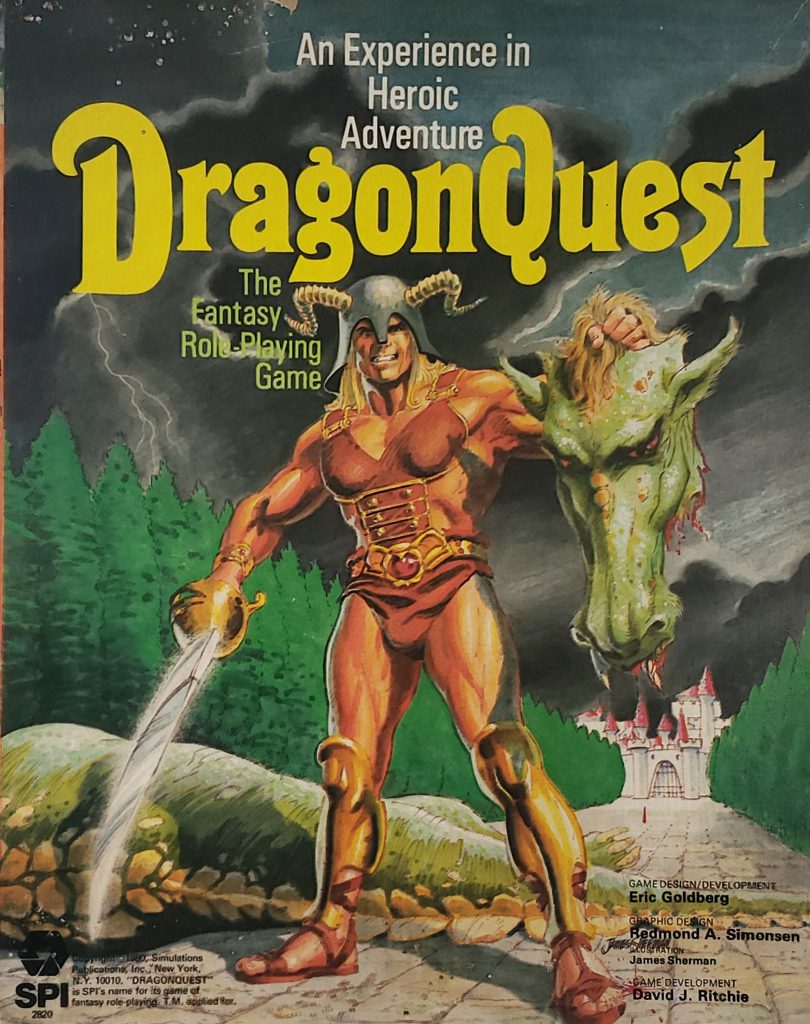
DragonQuest
Not to be confused with the Enix video game classic, Simulations Publications’ 1980 release DragonQuest was a fantasy tabletop RPG in the vein of Dungeons & Dragons. Where DQ differed from D&D was primarily in character creation: DragonQuest did away with character classes in favor of a skill-based approach to character ability and leveling. Generally, character creation in DragonQuest is much more open but also a lot more involved, following a similar tack that Palladium would adopt a few years later where you do things like roll for your character being right- or left-handed. It’s a bit too complicated but offers up some great alternative ideas to D&D character creation and has a decent combat system – good enough to support a standalone game, even – Arena of Death was such a game and released later in 1980. The game got a second edition from SPI in 1982 before TSR bought them up and released a third edition in 1988.
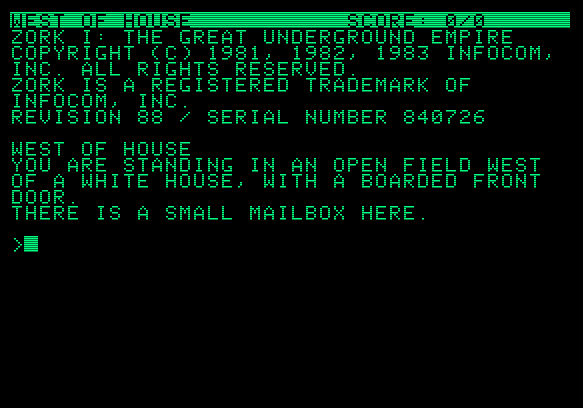
Zork I
The original Zork from 1977 was an important game but hardly a commercial success, having really only been available to a small audience who had access to MIT systems via ARPANET. The game’s first commercial release was in 1980, when the game’s developers would expand the game, break it into three parts, and release the first part, Zork: The Great Underground Empire, for the TRS-80, followed by an Apple II version of Zork I at the end of the year. Zork I focused more on the game’s adventure aspects, and the expanded trilogy are the games most players know and think of when they talk about playing Zork.
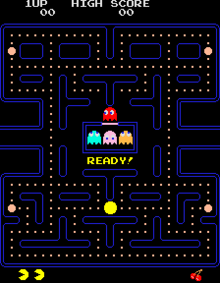
Pac-Man
One of the most famous arcade games ever made, Namco released Pac-Man in July 1980 in Japan (the game would debut worldwide in December). You play as Pac-Man, a yellow circle eating his way through a maze of dots while being chased by four ghosts – Blinky, Pinky, Inky, and Clyde, each of whom have different patterns for chasing you and moving around the maze. As the game goes on the maze doesn’t change but the ghosts get faster and the power-ups get worse. The game was originally released as “Puck Man” in Japan but was renamed to Pac-Man for its worldwide release later that year due to concerns (justified) that Americans would vandalize arcade cabinets to say “Fuck Man.” Pac-Man is one of the all-time great video games and one of the most important games to ever exist. The game was a massive hit and went on to be the best-selling arcade game of all time. When it was ported to the Atari 2600 two years later, it immediately became the best-selling game on that console, despite the port being pretty awful.
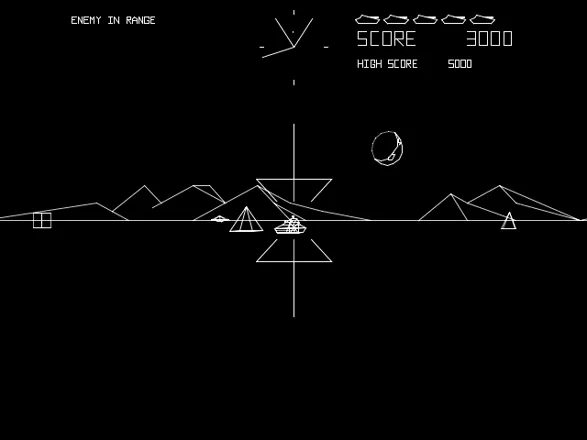
Battle Zone
Atari released this first-person shooter to arcades in November, 1980. In Battle Zone players take control of a tank, navigating a 3d battlefield rendered in black and green wireframe vector graphics to find targets and take them out. The game was visually ahead of its time and its stand-up arcade cabinet – in which the screen is viewed through a smaller, periscope-like viewer – really helps sell the graphics and the experience. The game featured multiple enemy types and destructible terrain and was a hit for Atari.
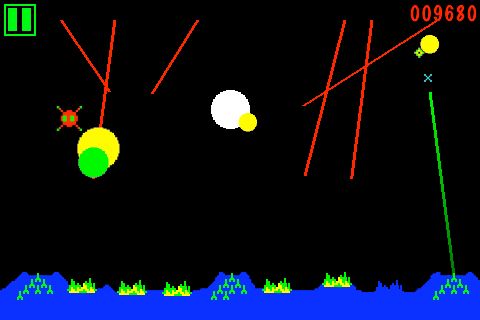
Missile Command
Atari released this missile defense shooter to arcades in July 1980. In the game players control three gun turrets attempting to shoot down incoming enemy missiles and aircraft before they destroy the six civilian centers below. Players control a crosshair to direct their own counterfire at the incoming missiles and the game becomes increasingly difficult at later levels, adding more complicated enemies and faster attacks. Missile Command is considered one of the all-time greats for arcade games and was a massive commercial success.
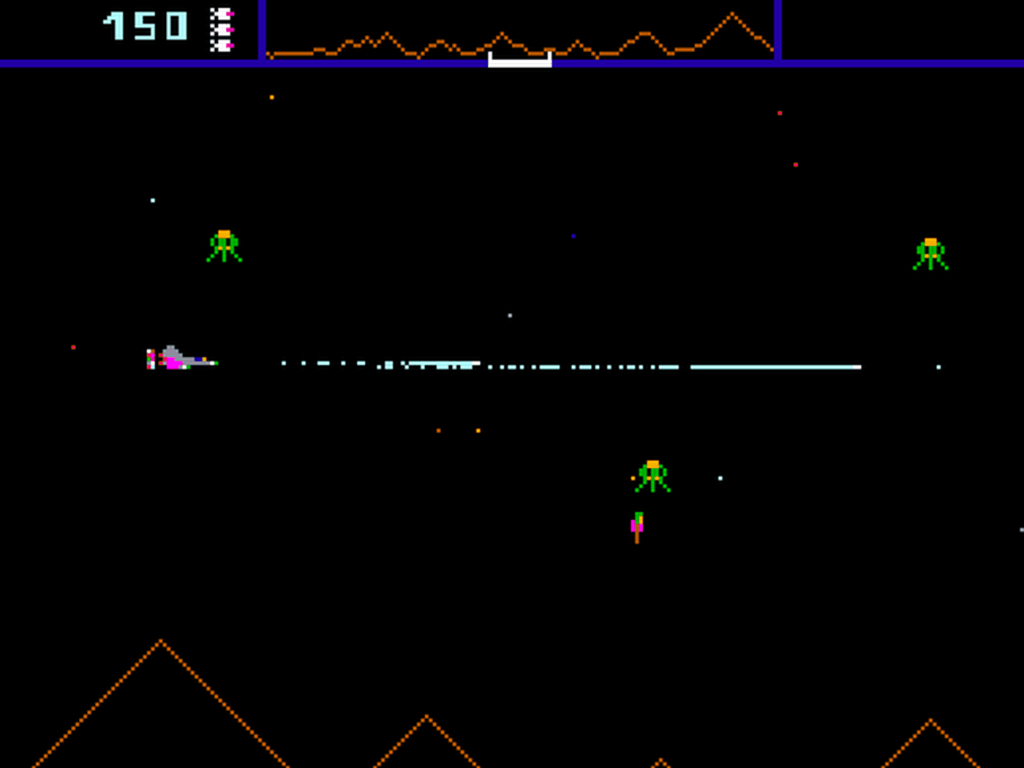
Defender
Williams debuted their side-scrolling shooter at the 1980 Amusement & Music Operators Association Show in November to an audience who seemed to be mostly put off by the game’s complexity. When Defender was widely released in 1981 it quickly became a best seller for Williams and is considered one of the best arcade games of all time, responsible for creating the side-scrolling shooter. In the game players control a spacecraft capable of moving left or right over the game’s mountainous terrain, shooting down enemy targets, with a radar minimap to see enemy locations. In addition to your laser, you get a limited number of smart bombs to fire off at enemies. It’s an incredibly fun and rewarding game to play and competitions to set a high score on a single life became relatively popular.

Rally-X
Namco’s Rally-X released to arcades in October 1980 and in many ways it’s a successor to Sega’s 1979 game Head On. Rally-X is a maze game with cars and simple rules: “By dodging red cars and rocks. Clear 10 flags before fuel runs out.” From there players navigate the scrolling maze in a game that incorporated a number of cutting-edge advancements of the time, such as full color graphics, screen scrolling, a persistent soundtrack, a mini-map showing flag locations, changing levels with increased difficulty, and overlapping sprite effects. The game has enough going on to make it stand out from Pac-Man and it’s a legitimately good time.

Crazy Climber
In this innovative puzzle/action game, players take the role of a man attempting to scale a series of skyscrapers. As players make their way up the building they have to dodge open windows, falling debris thrown out by angry residents, and King Kong himself. The game’s mechanics would go on to inspire Donkey Kong two years later.
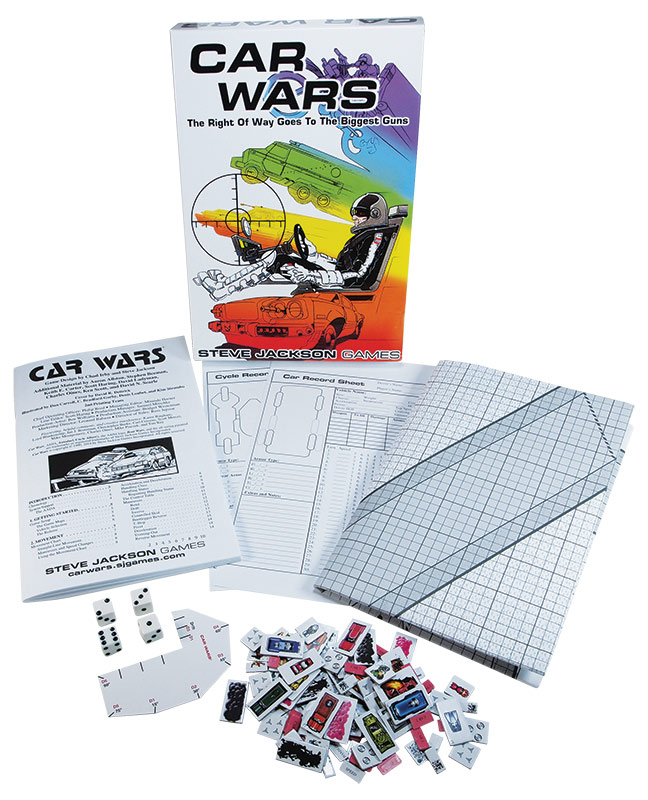
Car Wars
Released in 1980 by Steve Jackson Games, Car Wars is a vehicular combat game inspired by Mad Max and Death Race 2000. Players take control of one or more cars and attempt to wreck each other’s rides. The game comes with cardstock print-outs of vehicles on a set of die-cut cardboard sheets, but the real way to play is to use a bunch of Matchbox or Hot Wheels cars (this would become the official scale of play in later editions). Dice are used to determine combat outcomes and players can customize their drivers and cars, gaining skills and money. The game has been republished many times since its original release and is currently on its sixth edition.
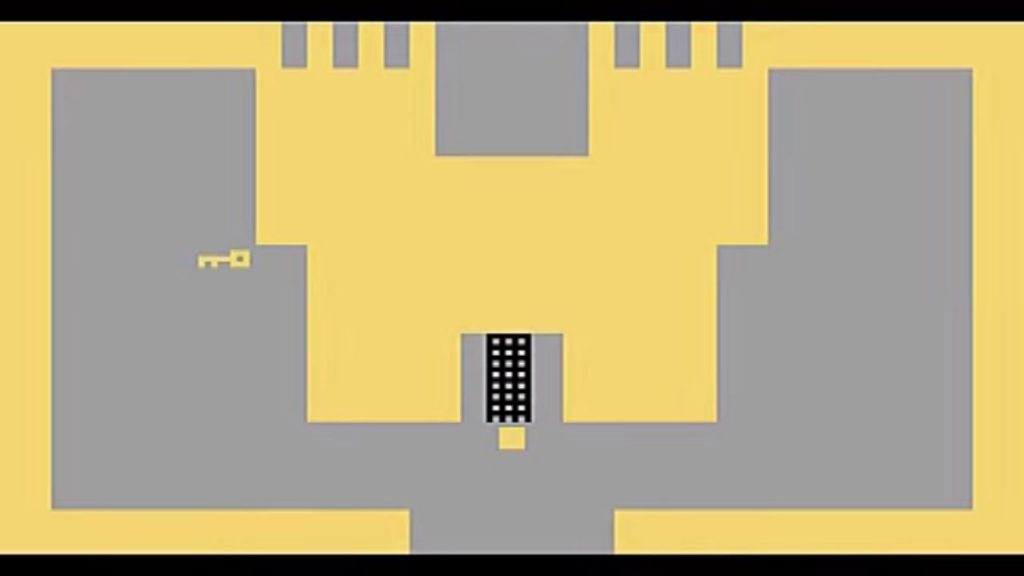
Adventure
Developed by Warren Robinett and released in 1980 for the Atari VCS, Adventure is known for being the first game with an easter egg – a secret room featuring the name of the game’s creator, in open defiance of Warner’s policy of not crediting its developers. In Adventure players search a massive castle for an enchanted chalice, solving puzzles and defeating three dragons. Originally conceived as a graphic version of 1977’s Colossal Cave Adventure, Robinett’s Adventure isn’t graphically complex but it’s possibly the biggest game you can play on the 2600. It’s more important than good, but that doesn’t mean it’s bad.

Rogue: Exploring the Dungeons of Doom
This revolutionary dungeon-crawling game was released in 1980 for a number of home computer platforms. Although similar in many ways to 1978’s Beneath Apple Manor for the Apple II, Rogue adds a number of things to the genre and massively simplifies the game’s graphics, using ASCII characters to speed the game up considerably and making it playable on university text terminals. In Rogue, players take on the role of an adventurer and set out to explore a procedurally-generated dungeon filled with monsters, traps, and treasures in search of a magic amulet. There’s a ton of depth in the game, with items players can pick up and effects to deal with, and there’s a surprising amount of variety in how you can approach challenges. Thanks to the way maps are randomly generated, each playthrough is different, giving the game tons of replay value.
Why It Was the Best Year in Gaming
1980 is easily one of the most important years in gaming history, at least as far as video games are concerned. If we count it as the official year of Zork’s release, 1980 has seven of the greatest games of all time on its roster. It’s a weaker year for tabletop releases but this is the year when a ton of the bedrock for the Eighties video game revolution would be laid. This is the year handheld gaming hit hands, the year Space Invaders and Adventure came to home consoles, the year Pac-Man, Battle Zone, Missile Command, Defender, and Rally-X hit arcades, and the year Rogue gave us endless, randomized adventuring fun. 1980 isn’t the broadest year in our set in terms of appeal but it’s got tremendous star power with its releases and it’s among the biggest years in gaming innovation.
This article is part of a larger series on the best year in gaming. For more years, click this link. Have any questions or feedback? Drop us a note in the comments below or email us at contact@goonhammer.com.
